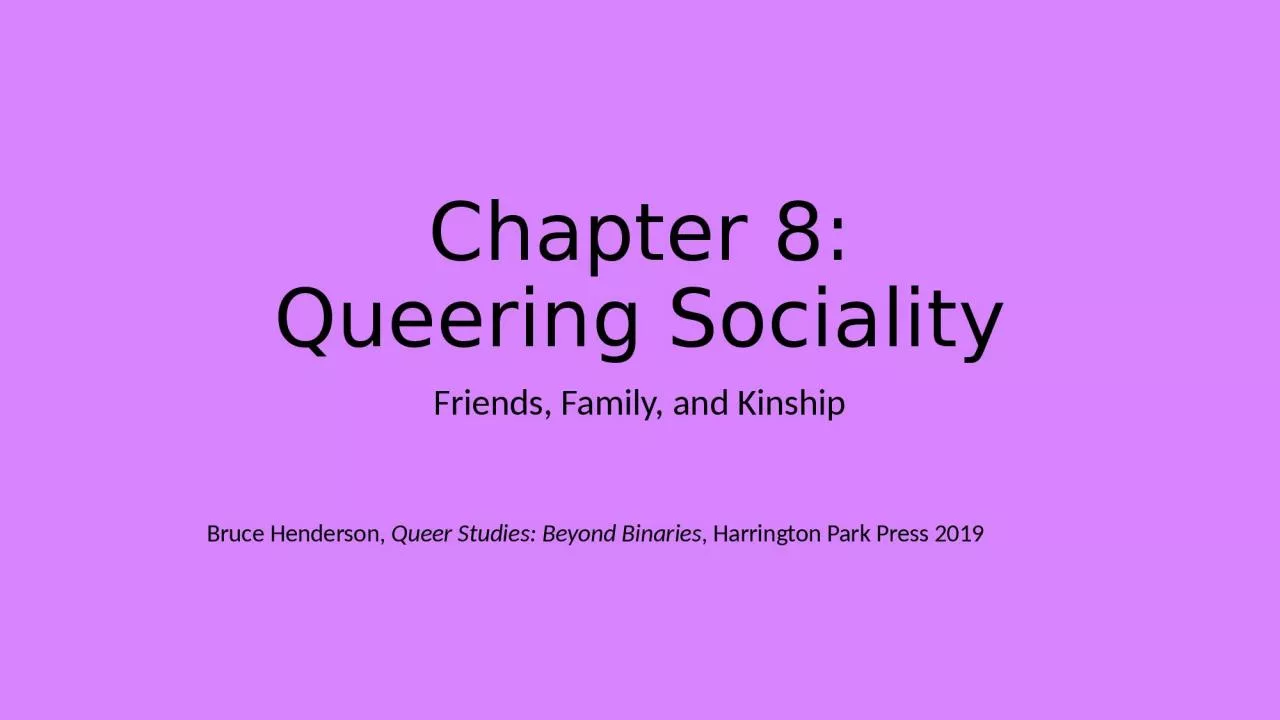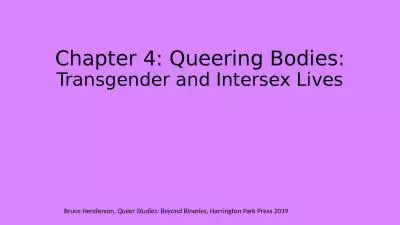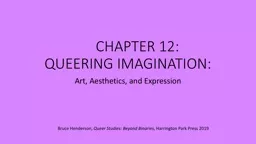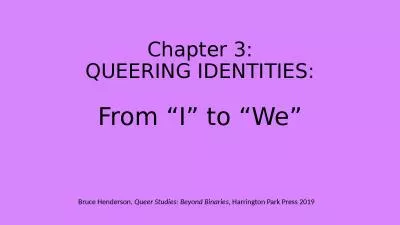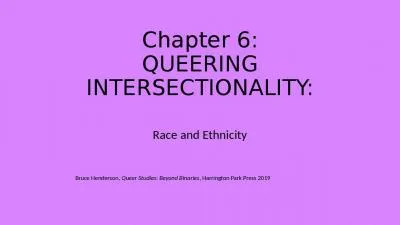PPT-Chapter 8: Queering Sociality
Author : carla | Published Date : 2024-02-03
Friends Family and Kinship Bruce Henderson Queer Studies Beyond Binaries Harrington Park Press 2019 Queer Sociality Definition the ways in which queer people form
Presentation Embed Code
Download Presentation
Download Presentation The PPT/PDF document "Chapter 8: Queering Sociality" is the property of its rightful owner. Permission is granted to download and print the materials on this website for personal, non-commercial use only, and to display it on your personal computer provided you do not modify the materials and that you retain all copyright notices contained in the materials. By downloading content from our website, you accept the terms of this agreement.
Chapter 8: Queering Sociality: Transcript
Download Rules Of Document
"Chapter 8: Queering Sociality"The content belongs to its owner. You may download and print it for personal use, without modification, and keep all copyright notices. By downloading, you agree to these terms.
Related Documents

